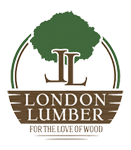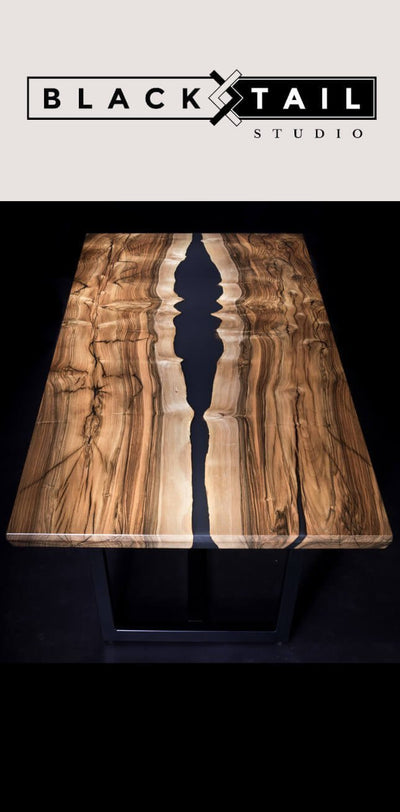Quality
Unfortunately, there is no grade of walnut lumber that
can promise 100% sap-free heartwood on both sides of the board. Our suppliers
provide walnut that is 80%+ heartwood on one side. Sometimes boards can have
more heartwood content, but it's just not guaranteed.
Basically, if you don't like pale sapwood in your walnut
you'll need to:
1. Cut it off or work around it
2. Consider using walnut veneer, or
3 Consider a dye & stain technique to hide the sapwood
Basically hardwood
lumber is a raw material so it will have some flaws. Not a lot, but
some.
What this means to you
is sometimes you can get nearly clear boards, others will have parts you don't
like, and it's just a part of woodworking.
We stock the highest
grade of lumber that we can buy, which most of the time is no less than
83% clear on one side. Most of the time it's better than that. But, sadly,
knot-free wood can't be guaranteed 100% of the time.
In hardwood lumber,
believe it or not, there's no official "clear" grade. Lumber grades
are determined by the National Hardwood Lumber Association, not by us, and the
highest grade is called FAS. The rules for that grade mean the boards have to
be 83% or more clear on one side.
Fortunately, in most
projects you're cutting your parts from boards and arranging them for color and
grain, plus usually only one side of a board shows in a finished project.
When you come upon a
knot, flip the board over to see what's on the other side. You might be able to
work around it that way.
Otherwise, plan for a
waste factor to give you enough wood to arrange your boards exactly how you
want.
This is a very understandable concern. We are in this for
the long haul, and we believe in order to build a successful business we need
to cultivate happy customers, not unhappy ones. So, we're not interested in
shipping you something you're going to be disappointed with. Since we stand
behind our work with a 100% satisfaction guarantee, we aim to complete your
order correctly.
With that, there are some characteristics of lumber that
you do have to be comfortable with dealing with in your own shop. Hardwood
lumber is, after all, just a raw material. Therefore, it's not perfect stuff.
The lumber we stock is graded "Select & Better" which means it'll
be at least 83% clear on one side. Most of the time it's better than
that.
Yet we still stand
behind it. If you're not happy with what you receive from us, we'll fix it.
Sizes
Woodworking is basically
three procedures: cutting, shaping & gluing. So, the tried-and-true way to
get super-wide solid wood is to glue it up from narrower boards, then trim it
down to the required size.
The majority of hardwood
lumber in 4/4 thickness is less than 12" wide. It's not impossible to get
12" or wider lumber, it's just not the norm.
There Are Other Ways to Create
Wide Panels
Shelving, desk tops, chest lids,
conference tables, and cabinet doors are just some of the projects that call
for wide panels. Solid wood works as long as you're good with gluing it up to
acheive your width.
Hardwood lumber comes in
random widths. For visual, here's a typical pile of red oak. Each board is a
different width.
Most widths are 5" to
7" in most woods in most thicknesses. (There are always exceptions!)
No boards are any narrower
than 4", except in unusual circumstances. The amount of wider choices
declines once we start talking about 8" and wider. Rarely are any boards
wider than 10". Basically the vast majority of 4/4 lumber is 5" to
7" wide. Thicker lumber, such as 8/4, is often mostly 7"-10".
Custom Planing Services
We can plane any material
that you need to the nearest 1/2" for you. Fees are charged by the hour or
custom quote.
To get a quote for thin
stock, email us (sales@londonlumberdieppe.com) with this info:
- Type of wood
- Final thickness
- Quantity or number of pieces
- Preferred widths or lenghts? Or random widths & lenghts?
Keep in mind that thin
stock will cup as it acclimates to your shop.
The best way to get solid
wood thicker than 2" is to glue it up and mill it down to the size you
need.
Believe it or not, this is more common than you might realize.
From time to time we do
stock a few species of lumber in 12/4 thickness (3" thick).
- Hard maple
- White Ash
Thick hardwood lumber is
quite uncommon for two reasons:
- It's hard to dry thick
lumber; the drying process results in a lot of waste and degrade in thicker
lumber. This makes it expensive and rare. - Low market demand
Glue up your own thick
material when you need it thicker than 2". It will be more stable and you
can get exactly what you want this way.
Anything wider than
10" is pretty uncommon. Not impossible - just not normal.
So you have three
tried-and-true ways to get exceptionally wide boards:
- Glue it up from a couple narrower boards and trim it to your desired size
- Use plywood
- Find a satisfactory piece in the lumber pile
Most of our lumber ranges
from 5" to 7" wide, but there are always random exceptions to the
rule.
Here is a list of a few
species that are usually pretty easy to find wider boards:
- Any type of mahogany (genuine mahogany, sapele, African mahogany)
- African padauk
- Purpleheart
- Cherry
- Ash
- Red oak
- Maple
- Poplar
Hardwood lumber is a raw
material, and we stock it in raw form. That means it hasn't been processed into
specific sizes yet, it's still in random sizes as it came off the tree. In custom woodworking, this kind of random
sizing usually okay because you're going to cut and/or join and glue to create
the sizes you need for your project.
It's perfectly okay to glue narrower boards to create wider ones - and
it's the way woodworkers have been doing it for many, many years.
This is lumber in a raw
form. It hasn't been cut into any particular dimension yet. It's like a blank
canvas for you to create your art with. Therefore a stack of lumber contains all
kinds of widths (generally 4" to 10") and lengths (generally up to 14
feet).
Sized as random widths and
lengths, think of hardwood lumber as a raw material rather than a fixed-size
product. Since it's randomly sized, it costs you less money than lumber that's
sawn and trimmed to particular sizes. Since what you're making is probably a
custom project anyway, if you were to buy lumber that's been made to size
you'll still probably need to cut and finesse your project parts to make the
right size and to the right fit. Why pay for the labor and waste of fixed sized
lumber if you're just going to cut it anyway?
Random widths and lengths
are measured by the board
foot, which
is a measurement of volume. You might be used to 2x4 and 1x6 materials priced
by the lineal foot. With random widths and lengths the way to measure it
is by volume.
So our lumber has a vast
variety of sizes. Therefore it gives you more options to arrange boards for
grain and color and to create the sizes you need.
Satisfaction
We provide a 100%
satisfaction guarantee with all our orders. If you are not satisfied, please
give a short description as to what is the causing factor of your
dissatisfaction. Was there damage? Where you shorted material? Perhaps
incorrect species? After placing your description please provide pictures
evidently depicting your issue with your order. At this point we can review
this and correct whatever issues lead up to your discontent.


